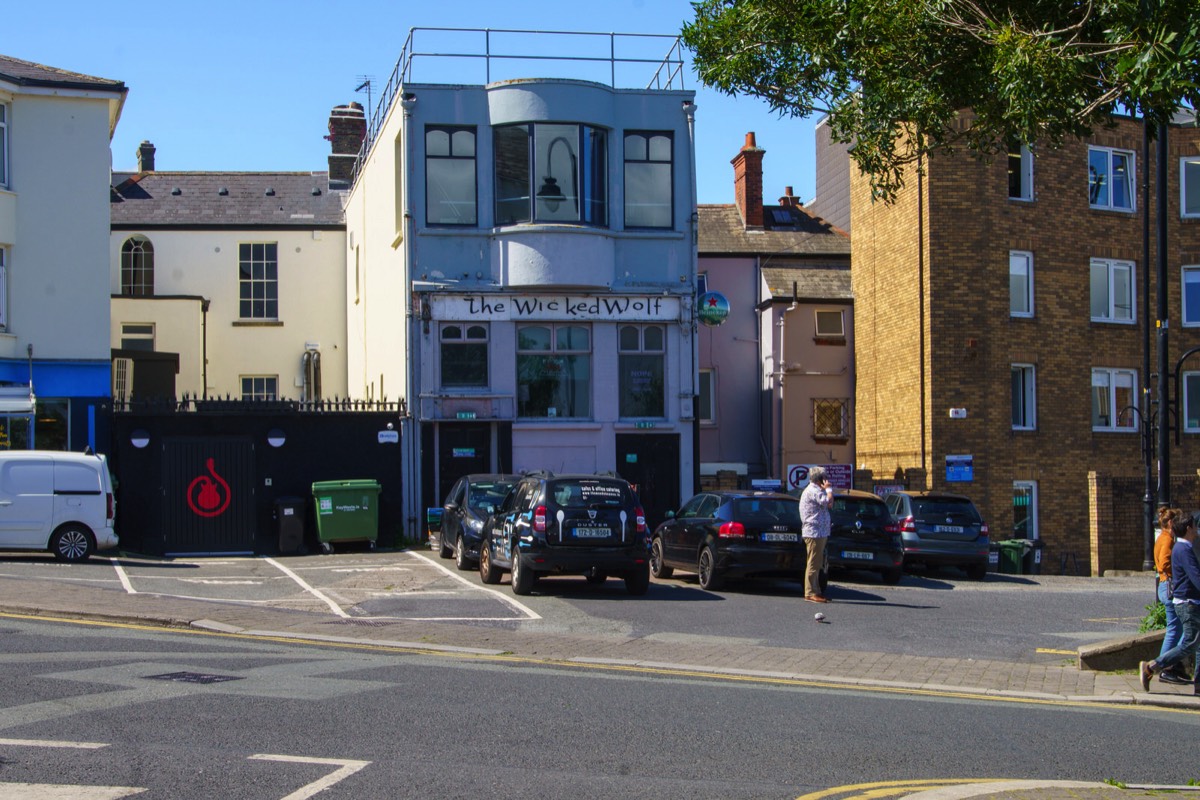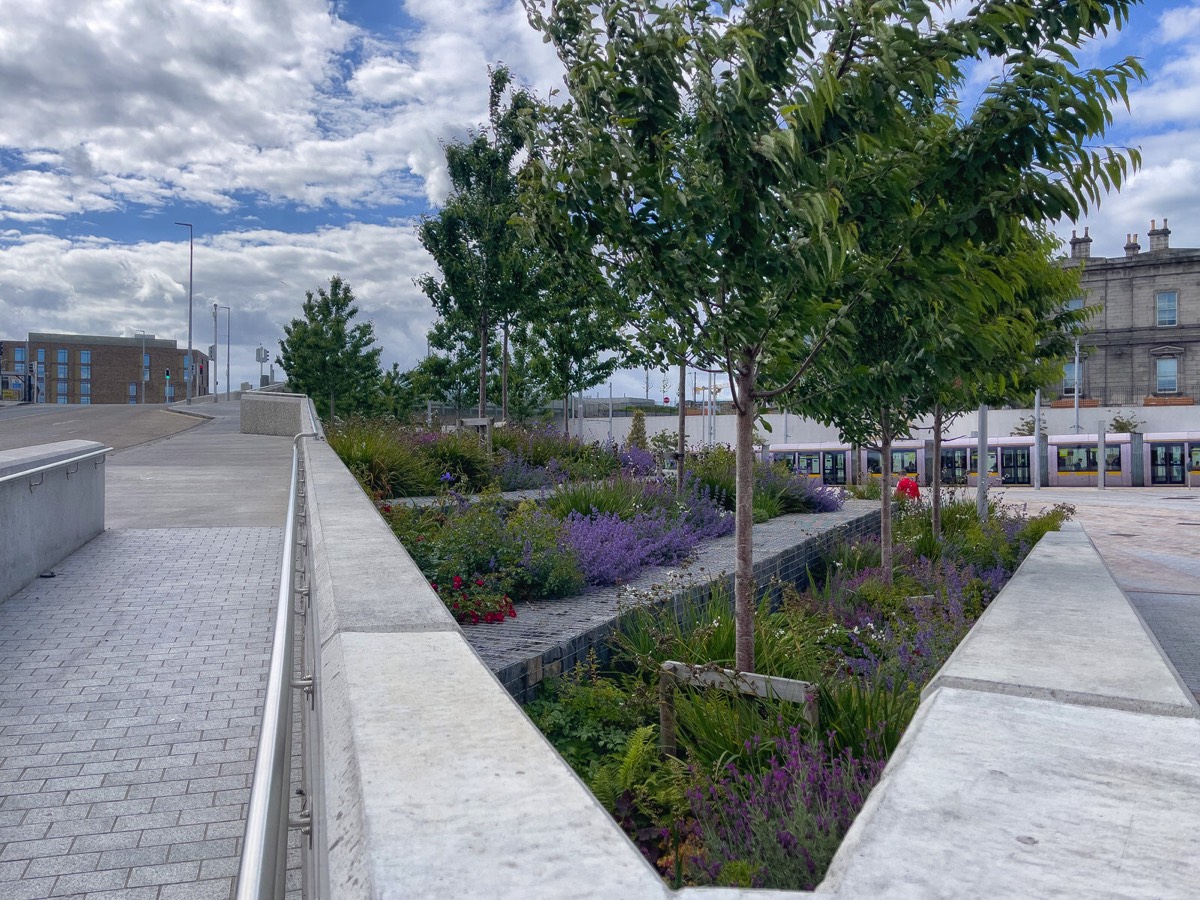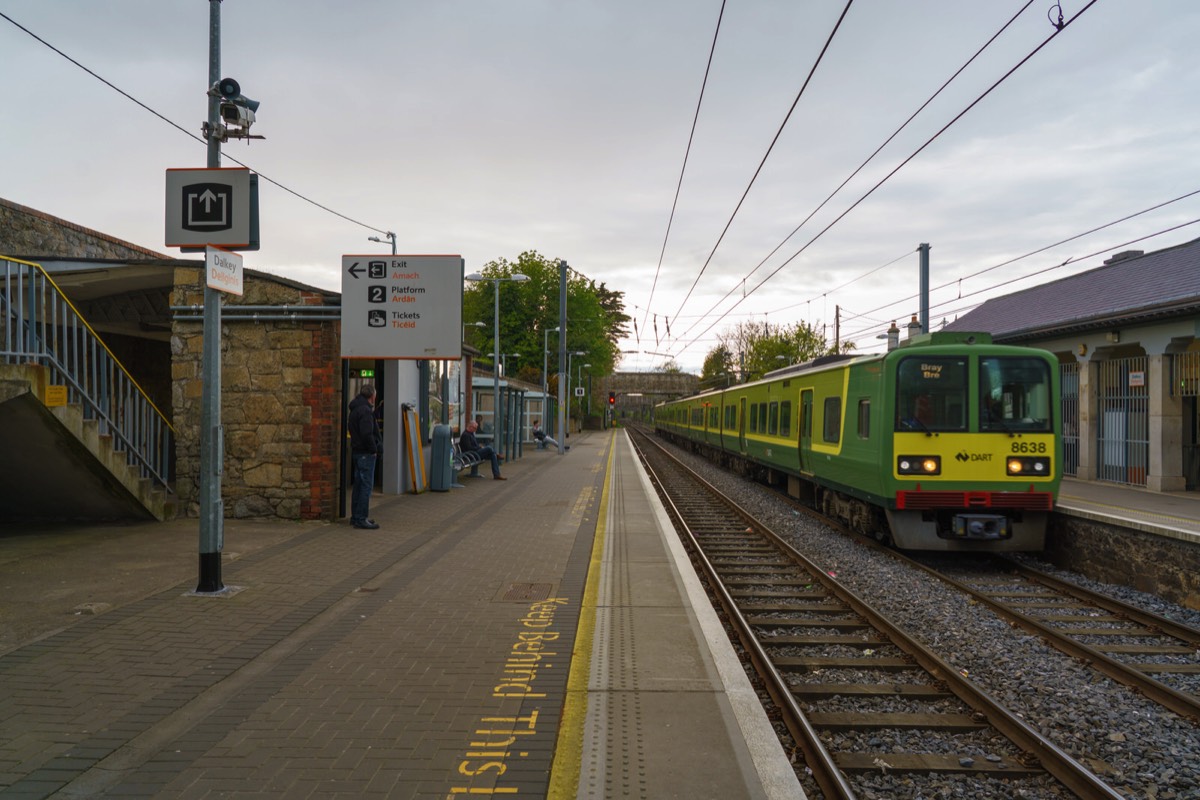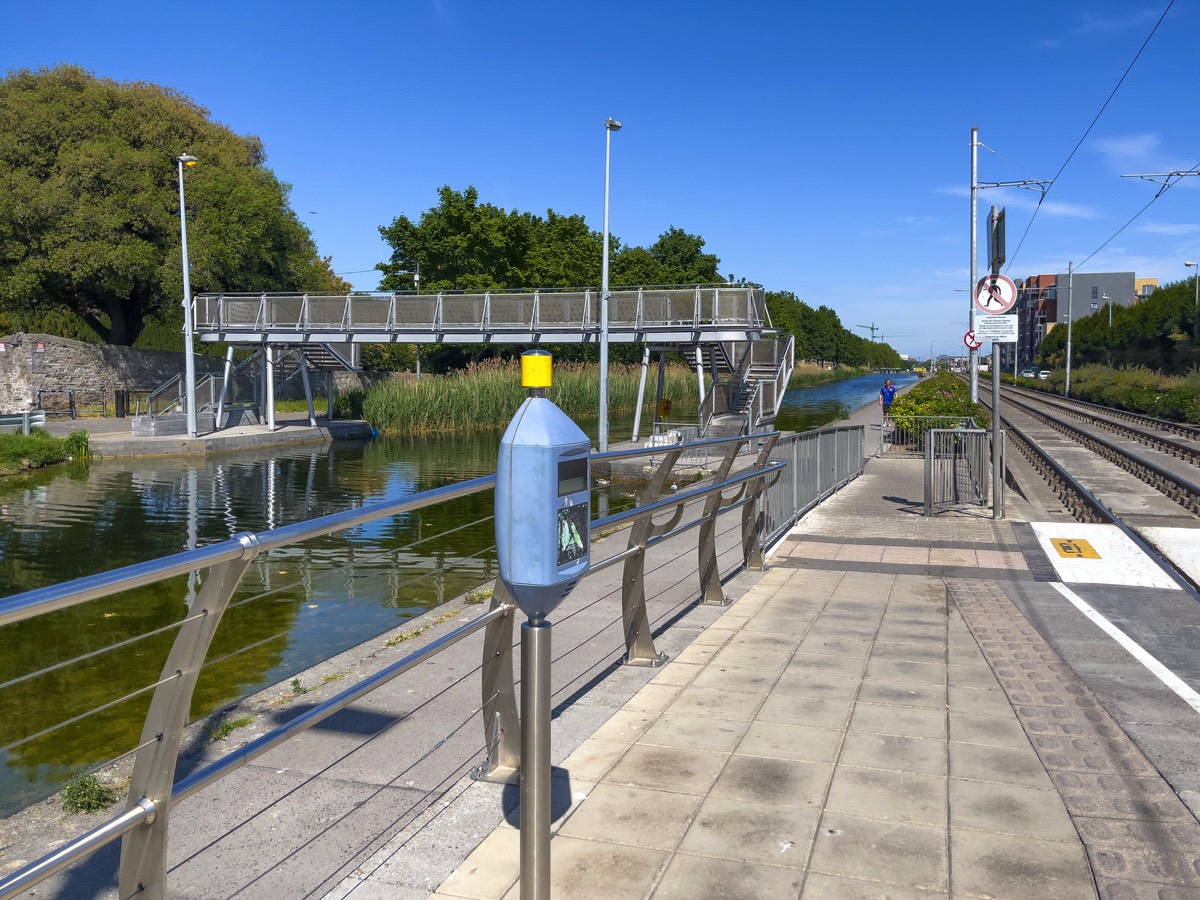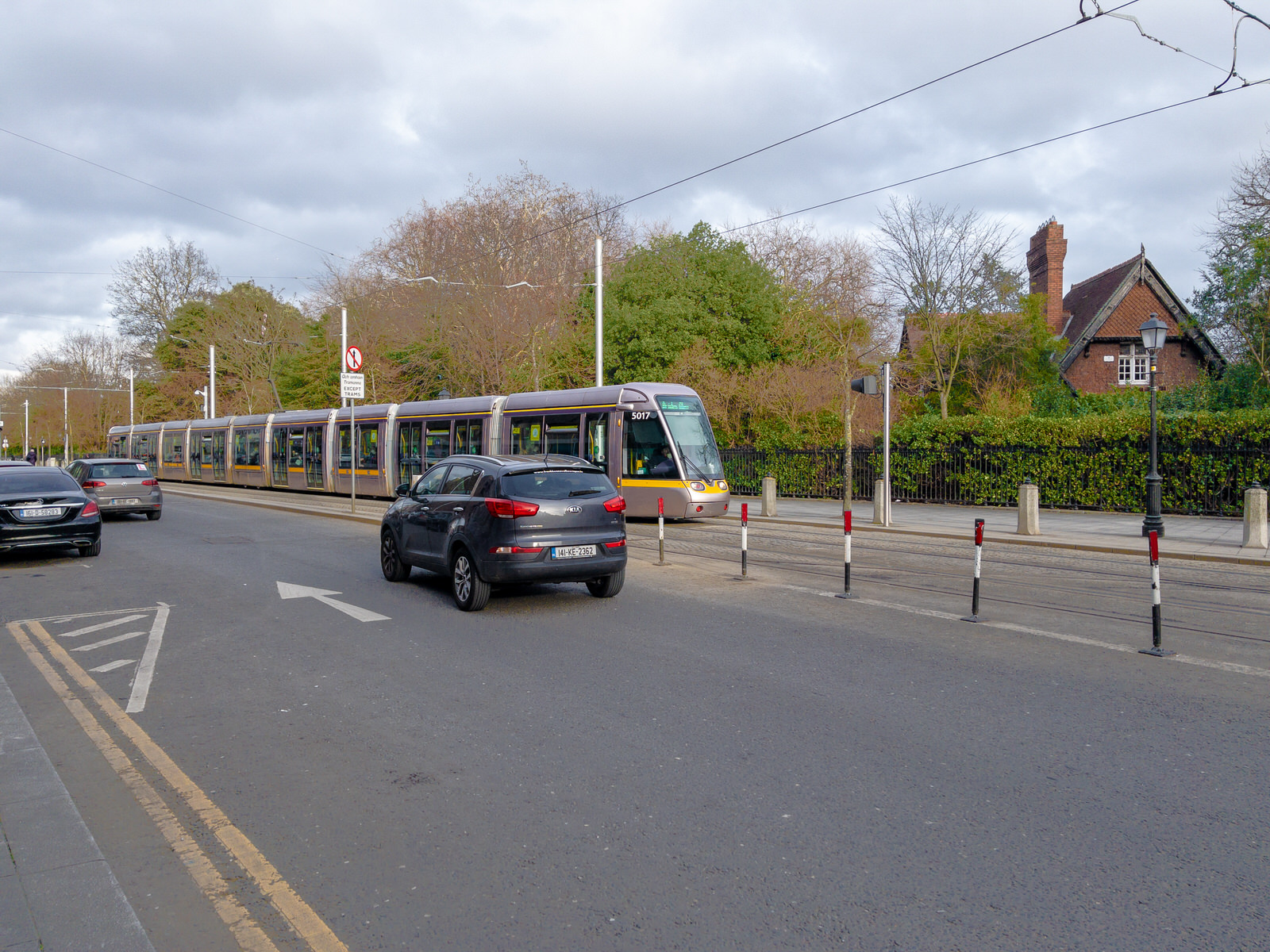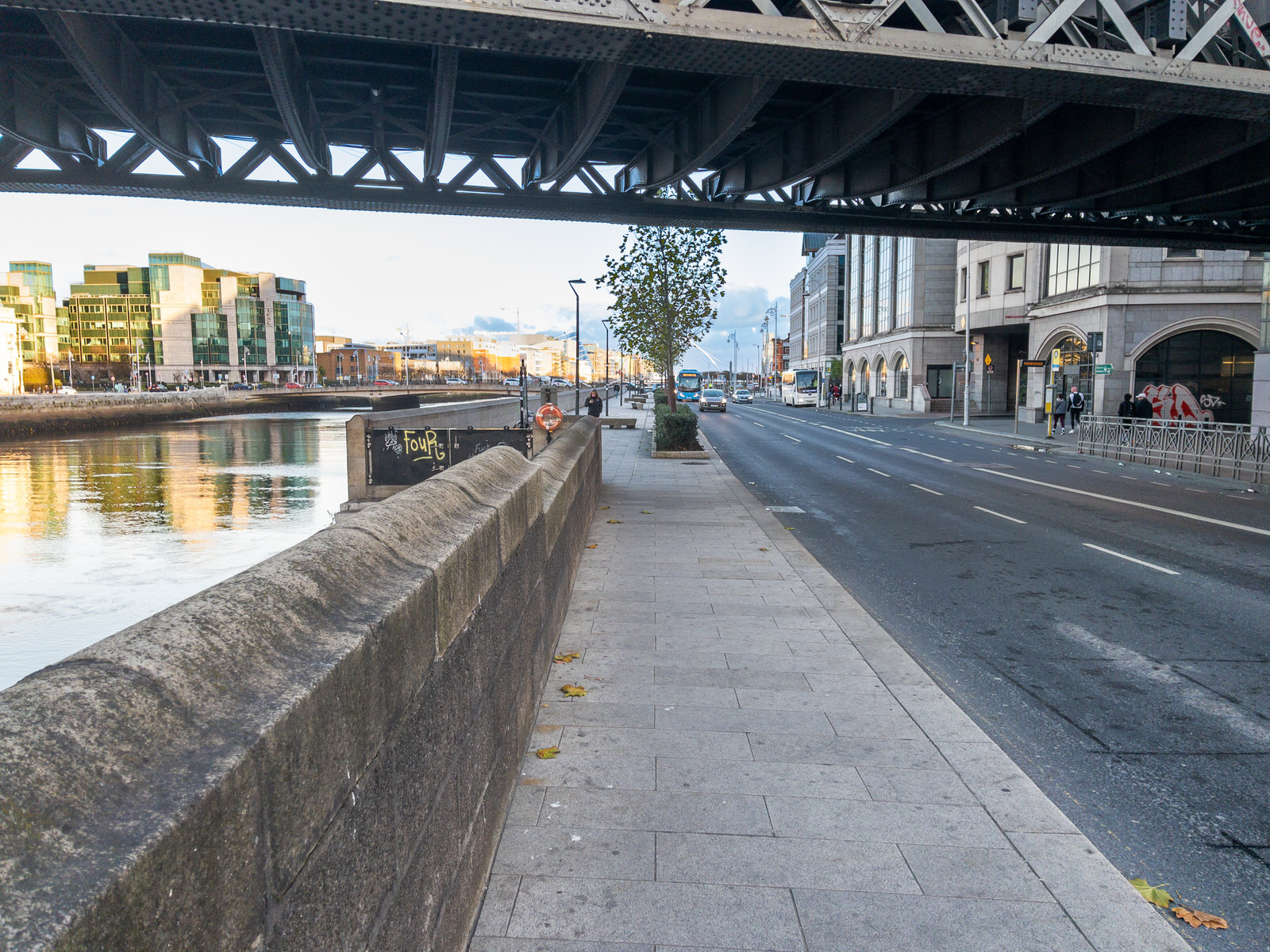PUBLIC TRANSPORT - ALL TYPES AND STYLESPHOTOGRAPHED BY WILLIAM MURPHY
TRAIN STATION IN BLACKROCK VILLAGEAND NEARBY PHOTOGRAPHED 3 AUGUST 2022
TRAM STOP AT BROADSTONE JUNE 2022TESTING iOS 16 AND iPHONE 12 PRO MAX
THE POINT TRAM STOP THE POINT VILLAGE AND NEARBY
To be honest the immediate area is a bit bleak and unappealing, but this is my opinion.
The Point Luas stop,the easternmost terminus of the docklands extension of the Luas Red Line light rail system, is located in the middle of the Point Village complex. This Luas link to Tallaght connects the Point Village to other transport options, including the DART, suburban rail, Busáras, mainline rail, and the future Dublin Metro. The Dublin Port Tunnel southern portal is located nearby.
The Point Village is a commercial and residential development in the North Wall area of Dublin, Ireland. The elements of the €800 million development completed to date include offices and residential and hotel accommodation, a small shopping centre, a cinema, a museum and a five-level underground car park. The development ran into a number of problems and was taken over by NAMA in April 2013.
The main building of the development - now branded as Point Square - containing the retail, hotel and cinema elements as well as office space - was completed prior to the post-2008 Irish economic downturn, however the retail element did not open except as an entry to the cinema.
Dunnes Stores had agreed to be the anchor of the retail element, but has delayed opening the store for more than a decade, appealing repeated legal demands to do so. Some of the internal units are to be combined and converted to health or leisure units due to continued low demand for retail.
The office space has been taken by Oath, moving some operations from their main location at East Point Business Park, and Voxpro.
The hotel element of the development operates as The Gibson Hotel, opened in June 2010 and including nine suites, with access to terrace gardens. It also includes a spa, gymnasium, two outdoor hot-tubs and large conference facilities.
The 73m Exo Building is, as of 2022, under construction on the site of the cancelled Watchtower Building at the Eastern end of Point Village.
TRAM STOP AT ST. STEPHEN'S GREENPHOTOGRAPHED FEBRUARY 2022
St Stephen's Green is a stop on the Green Line of the Dublin Luas (tram) system. Originally opened in 2004, it was further developed as part of the Luas Cross City project between 2013 and 2017.
From the opening of the Luas Green Line in 2004 until December 2017, St Stephen's Green served as the northern terminus of the line to Sandyford and later Cherrywood, with a stop located on the western side of St Stephen's Green.
Trams approach the stop from the south, after coming up Harcourt Street. Immediately before the stop is a double crossover point which was used for terminating trams, but is now rarely used. After departing the stop, trams turn right and head along St. Stephen's Green North, where there is a siding, and then turn left onto Dawson Street.
In 2017 an extension of the Luas Green Line was opened, crossing the River Liffey, and intersecting with the Red Line at the junction between O'Connell Street and Abbey Street, terminating at Broombridge, interconnecting with the Irish Rail Broombridge railway station. Named the "Luas Cross City line", this project was announced in 2011 as part of the government's 2012–16 Infrastructure and Capital Investment Plan. Construction work for the Rosie Hackett Bridge across the River Liffey began in April 2012, with this bridge carrying the southbound Luas Cross City track. The existing St. Stephen's Green stop on the Luas Green Line subsequently became a through-point for the new line, with the stop's platforms extended to accommodate the proposed introduction of longer trams in 2018.The extension opened on 9 December 2017, with the St. Stephen's Green stop remaining operational throughout the works.
Initial plans for the proposed Dublin Metro called for St Stephen's Green to be used as the southern terminus of a line to Belinstown, with a tunnel at the north-western corner of the park. While originally targeted for 2013, these plans were subsequently indefinitely deferred. Similar plans for a DART network extension proposed an underground station at St Stephen's Green. Though targeted to start in 2015, these works were also indefinitely deferred.
In March 2018, the Dublin Metro was rebranded under the name "Metrolink", and proposed to run from Swords in the north, passing through the city centre to points in the south. A version of this Metrolink plan proposed that an underground station be built on the Eastern side of St Stephen's Green.
THE WILLIAM DARGAN BRIDGEDUNDRUM
William Dargan Bridge, opened in 2004, is a cable-stayed bridge in Dundrum, Dublin in Ireland. It carries the Luas light rail line (Green Line) across a busy road junction. The bridge connects rail alignments which were formerly part of the Harcourt Street railway line.
The bridge crosses the R112 and R117 regional roads as well as the little-known Slang River.
William Dargan (28 February 1799 – 7 February 1867) was arguably the most important Irish engineer of the 19th century and certainly the most important figure in railway construction. Dargan designed and built Ireland's first railway line from Dublin to Dún Laoghaire in 1833. In total he constructed over 1,300 km (800 miles) of railway to important urban centres of Ireland. He was a member of the Royal Dublin Society and also helped establish the National Gallery of Ireland. He was also responsible for the Great Dublin Exhibition held at Leinster lawn in 1853. His achievements were honoured in 1995, when the Dargan Railway Bridge in Belfast was opened, and again in 2004 when the Dargan Bridge, Dublin a new cable stayed bridge for Dublin's Light Railway Luas were both named after him.
The Royal Dublin Society elected Dargan as a life member in November 1851. After attending the Crystal Palace Exhibition of 1851, William Dargan proposed to the society with an extended exhibition, with an offer of £20, 000 of funding.
As the committee of the 1853 Exhibition believed that this event would be self-financing, mainly relying on Dargan's contribution of £20, 000, it was announced that there would be no cash donations taken. After the building costs had risen by the autumn of 1852, the committee was forced to make a public subscription, but Dargan offered another £6, 000 as patronage. It eventually reached to the point that Dargan personally funded this exhibition with a considerable amount of £88, 000. Dublin Exhibition received many visitors. Although there were only 400 people on the first two days, this number rises to 4, 000 a week later, and to 5, 000 on the following day. The British royal party arrived at Dun Laoghair on 29 August 1853 at the purpose to attend the exhibition, and Queen Victoria personally meets William Dargan.
Prince Albert commented both on Dargan and the Dublin Exhibition, "Mr Dargan is the man of the people. He is a simple, unobtrusive, retiring man, a thorough Irishman, not always quite sober of an evening, industrious, kind to his workmen, but the only man who has by his own determination & courage put a stop to every strike or combination of workmen, of which the Irish are so fond. All he has done has been done on the field of Industry & not of politics or Religion, without the Priest or factious conspiracy, without the promise of distant extraordinary advantages but with immediate apparent benefit. The Exhibition, which must be pronounced to be very successful, has done wonders in this respect. A private undertaking, unaided by Govt, or any Commission with Royal Authority, made and erected at the sole expense of a single Individual, & this an Irish Road contractor, not long ago a common labourer himself, who had raised himself solely by his own industry & energy, - it deserves the greatest credit & is looked upon by the Irish with infinite self-satisfaction as an emblem of national hope".
William Dargan ultimately lost £20,000. At the close of the exhibition the Irish National Gallery on Leinster Lawn, as a monument to Dargan, was erected, with a fine bronze statue of himself in front, looking out upon Merrion Square.
GRANGEGORMAN TRAM STOP AND NEARBYINCLUDING GRANGEGORMAN AND BROADSTONE AREAS
The current development phase at Grangegorman saw the East Quad open in late 2020. The buildings, when fully operational, will accommodate 10,000 students. Further to this, three existing buildings have been significantly upgraded and refurbished to offer a range of facilities and services to both students and staff - Lower House, Rathdown House, and Park House.
Grangegorman has beautifully restored a historic part of Dublin City. In keeping with expected and demanded conservation efforts, TU Dublin is committed to the promotion of sustainable modes of transport. The Campus is fully pedestrianised and all are encouraged to use public transport to access the campus.
THE LOOPLINE BRIDGERAILWAY BRIDGE ACROSS THE RIVER LIFFEY
Designed by John Chaloner Smith (engineer to the Dublin, Wicklow and Wexford Railway), the bridge was built between 1889 and 1891. It consists of wrought iron lattice girders on a double row of piers with five spans. The viaduct is approximately six metres above street level and supports two railway tracks.
During original planning and construction (in the late 19th century) the project was subject to much opposition and controversy, because the structure blocks the view down river to The Custom House. However, the bridge was deemed necessary as a rail link between north and south Dublin, and to facilitate the movement of transatlantic mail coming from Kingstown (Dún Laoghaire) and Queenstown (Cobh).
100 years later, the visage of the bridge remains the subject of some debate. Already arguably less attractive than some of Dublin's other bridges, the façades of the Loopline have been used by Iarnród Éireann for billboard advertising. As of 2006, the company has scaled back the bridge's use for this purpose to reduce impact on the city skyline, following input from An Bord Pleanála and Dublin City Council.
A prominent feature in the city landscape since 1891, the Loopline Bridge appears in one of the most famous literary works associated with Dublin:
A skiff, a crumpled throwaway, Elijah is coming, rode lightly down the Liffey, under Loopline bridge, shooting the rapids where water chafed around the bridgepiers, sailing eastward past hulls and anchorchains, between the Customhouse old dock and George’s quay.
— James Joyce, Ulysses
Commercial DisclosurePLEASE NOTE THAT LINKS BELOW MAY REDIRECT YOU TO THE AMAZON LOCATION MOST LIKELY TO SHIP TO YOUR ADDRESS
You will find links to buy products from Amazon, Google and other partners. If you click on these links, you’ll find that the URL includes a small extra piece of text which identifies that the click came from my websites. This text is an affiliate code, and it means that I get a small percentage of the money you spend if you choose to buy that product, or, in some cases, other products from the site soon after. These affiliate links help pay the costs of producing my websites and ensure that the content is free to you.

Zeiss Batis 85mm f/1.8 Lens for Sony E Mount, Black
I HAVE THIS AND THE 135mm LENS
VERSATILE FULL-FRAME LENS: The powerful lens for the mirrorless full-frame system of Sony fulfills the highest requirements. Despite its compact design, the image meets the expectations of professional photographers. EXCELLENT RESOLUTION AND HIGH CONTRAST: Richly saturated and vivid colours are a must in the creation of lasting impressions. However, stray light within an optical system leads to a lightening of the image that is particularly noticeable in the shadows. This reduces image contrast, with the result that exposures lack contrast and appear faded. To avoid this, ZEISS combines various specially developed technologies to reduce the undesirable effects of stray light. ROBUST AND WEATHERPROOF METAL CONSTRUCTION: Thanks to features that are designed to keep out dust and spray water, the lens is perfectly suited for critical outdoor conditions. It is also designed for many years of intensive use. SMOOTH AND RELIABLE AUTOFOCUS: The design of the autofocus system requires an extremely accurate shifting of particular lens groups. The focusing system of ZEISS lenses is designed to ensure a robust and smooth-running autofocus mechanism with the best imaging performance.
YOU SHOULD ALSO CONSIDER THE 25mm LENS
